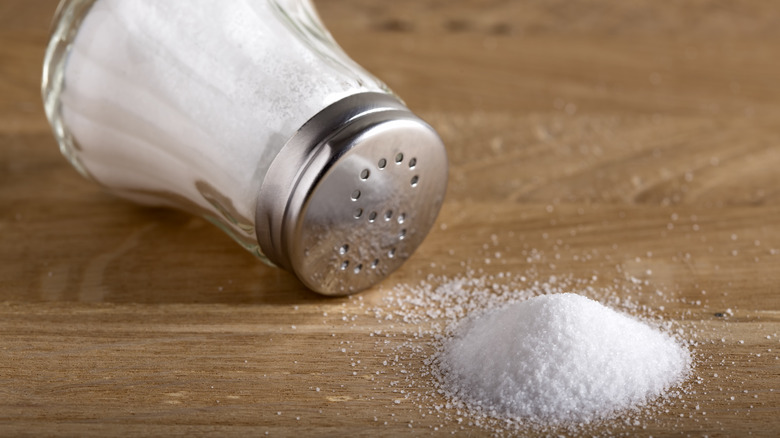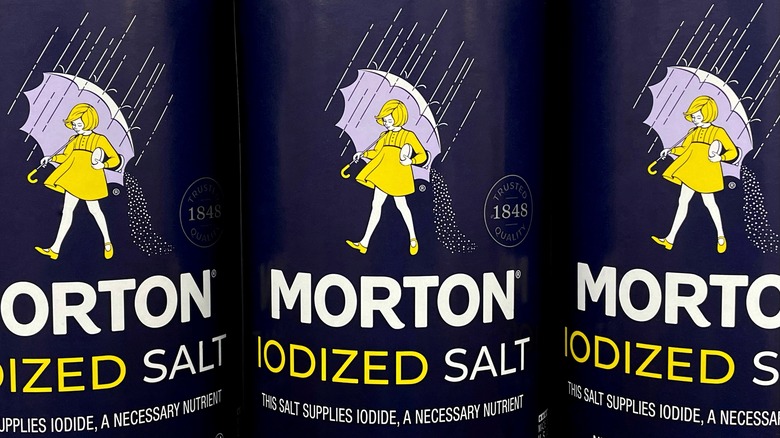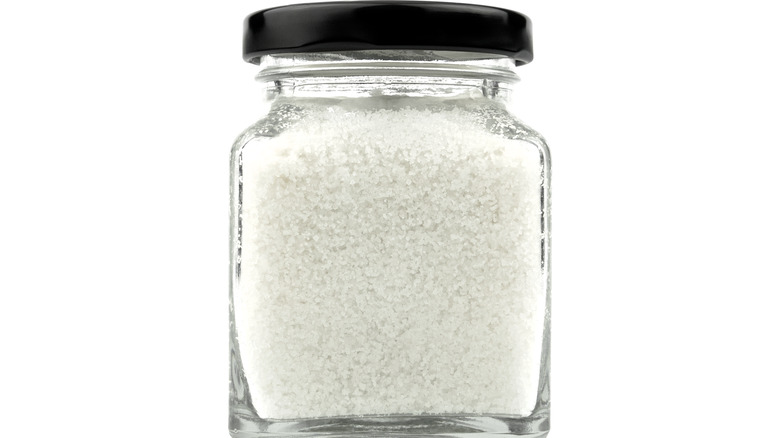How To Store Salt To Best Preserve Its Texture
Salt is a naturally occurring mineral — "salt of the earth" isn't just a phrase we throw around without meaning. Not only does it make food taste better, but salt is also absolutely essential to us and all animal life. We need it to survive on this planet and for that reason it is abundant. It's found in our seas, lakes, and within the depths of our underground. From kosher to iodized to Himalayan to truffled, salt is all around us (via Salt Works).
Salt has the power to enhance any flavor. There's a reason we love potato chips, popcorn, and pretzels — it has the power to bring out sweetness while masking unpleasant flavors, according to ACS. It's a valuable addition to any pantry cabinet.
While salt is a mineral and will last forever, this doesn't mean its integrity and texture can't change. What causes these changes and what's the best way to store your salt to best preserve its texture?
Salt and moisture do not mix
If you've ever lived (or even just dined) in a humid climate, you've likely encountered a salt shaker that just doesn't seem to "shake" and probably contains grains of rice. In lieu of fine grains of salty sand cascading out of the pinpoint holes, you were met with solid clumps — or even one entirely solid mass of salt that didn't budge upon its inversion. There is a reason Morton salt features a little girl with an umbrella and dons the slogan, "When it rains, it pours." Humidity is no friend of salt. That grain of rice? Soaks the moisture right up — just like how it gets the water out of your iPhone.
To combat this sticky, salty situation, Morton Salt Company began adding anti-caking agents to their salt in the early 1900s. They also introduced their infamous round packaging with the metal spout to drive home the idea that their salt was pourable and clump-free, per History Daily.
Today, most table salt contains an anti-caking agent, typically sodium aluminosilicate, that helps keep the particles separate and sans any clumping (via Food Insight).
How to store salt
If you're not a fan of the regular old table salt or kosher varieties that come with an anti-caking agent and adding grains of rice to your salt shaker seems extra, there are some tips to ensure your salt stays shakeable. Sea salt, Himalayan, unrefined, or any flavored salts typically do not come with any humidity defense on hand. But proper storage will maintain their granular, pourable texture.
An airtight container is key, and glass is the way to go. Cool, dry, and dark places are also a friend of salt. So while keeping it next to your stove on the counter is practical for cooking, it's a no-go for salt preservation (via The Provident Prepper).
Ironically, the types of salts that store the longest and the best are those that are unrefined and without any anti-caking agents. Pure salt without additives will keep better in the long run — indefinitely, in fact.


